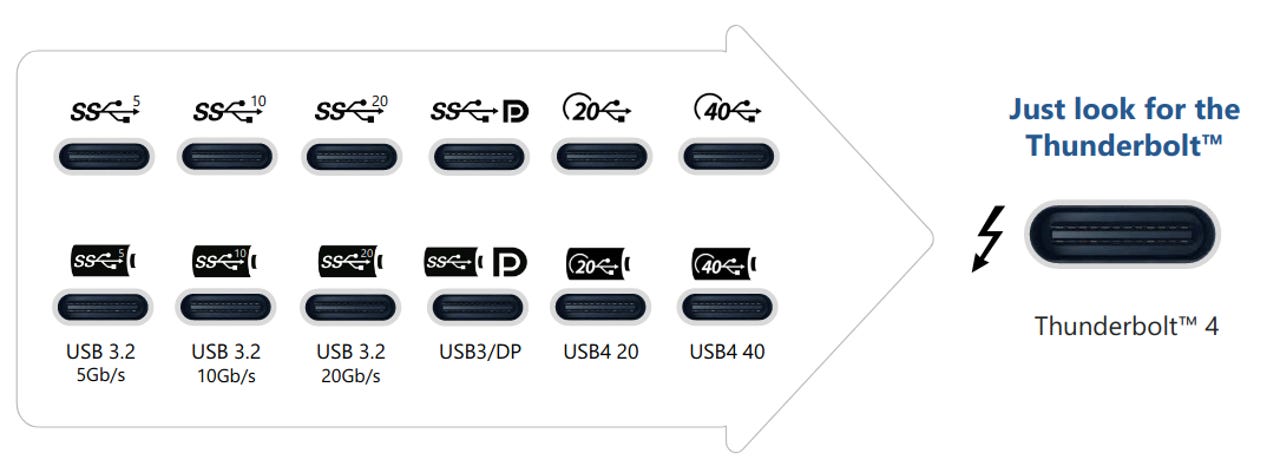Thunderbolt 4: Same 40Gbps speed but Intel ups requirements for certification


That's cool, but how do you tell a Thunderbolt 1 port from a 2nd gen or 3rd gen port?
Intel on Thursday detailed the minimum standards that accessories and cables will need to meet in order to gain Thunderbolt 4 certification.
In terms of overall bandwidth, the newest version of Thunderbolt supports the same 40Gbps speeds introduced with Thunderbolt 3, however, Intel has now attached a number of conditions.
Thunderbolt 4 will support a pair of 4K displays, PCIe speeds have been doubled to 32Gbps, cables can be up to 2 metres in length, and Intel is requiring its VT-d direct memory access protection be used to prevent peripherals from gaining unauthorised access to system memory.
The chip giant said it was looking at cables with lengths of between 5 and 50 metres for the future. While Thunderbolt 4 cables will have the lightning bolt logo with a small number 4 under it, ports will continue to just have the logo.
For what Intel is classing as "thin and light" laptops, those devices must be able to draw down enough power to charge over Thunderbolt 4, and when connected to a dock they must wake from sleep. Intel said it was also introducing docks with four Thunderbolt 4 ports that would be able to transfer data, run a display, and power a computer over a single cable back to a thin laptop.
While Thunderbolt 3 is classified as compatible with USB 4, the newest Thunderbolt iteration is now classed as compliant. Intel contributed Thunderbolt 3 to the development of USB 4.
"Thunderbolt 4 will offer the most complete version of USB-C with a required superset of capabilities not required by USB 4," Intel said.
The first chips to have Thunderbolt 4 built in will be its upcoming Tiger Lake processors, which will include a number of Project Athena laptops.
In April, it was reported that Microsoft had opted not to use Thunderbolt 3 in its Surface devices due to concerns about security and direct memory access.
Related Coverage
- Do you know the difference between Thunderbolt 3, USB-C 3.1 Gen 2, and USB-C 3.1 Gen 1?
- Anker PowerExpand Elite 13-in-1 dock: The ultimate must-have Thunderbolt 3 accessory for Mac and Windows users
- Apple Silicon may have killed the PC as we know it
- Ex-Intel engineer: Apple turned away from Intel over Skylake CPU bugs
- Intel introduces Cooper Lake processor, other additions to portfolio
- Intel launches 4 Tremont and 1 Sunny Cove core Lakefield hybrid processors